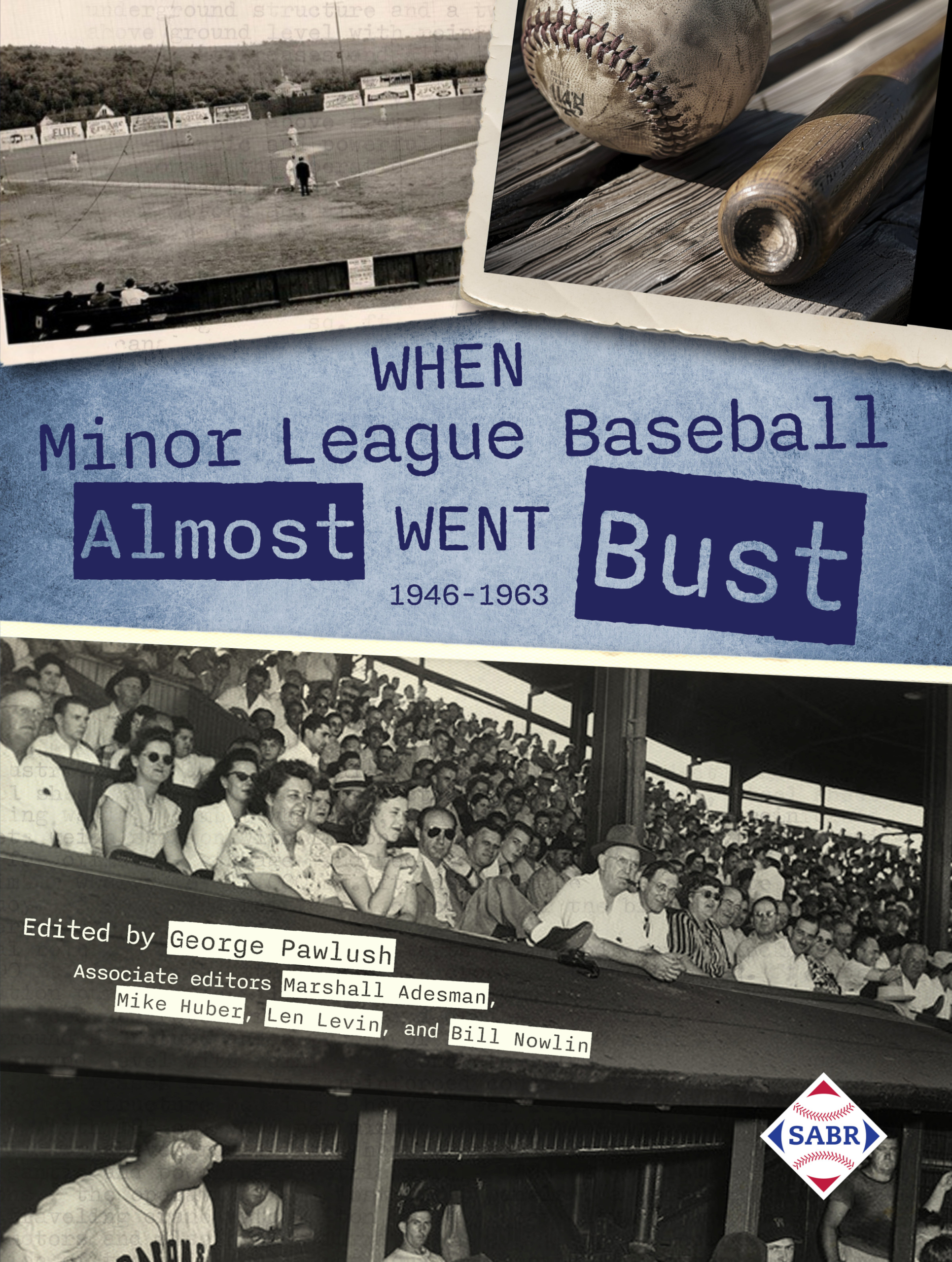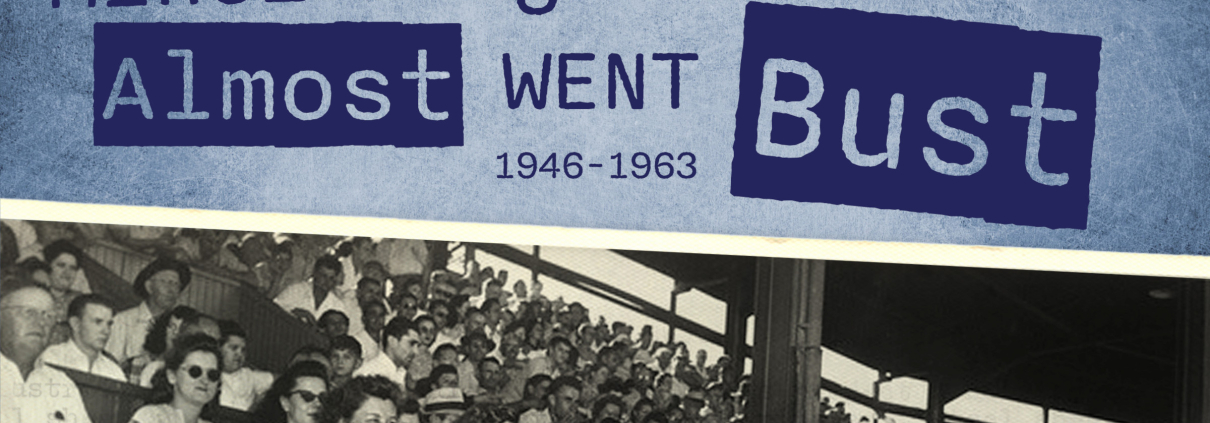Stars Among Stars
This article was written by Will Christensen
This article was published in When Minor League Baseball Almost Went Bust: 1946-1963
 All-Star games had been an annual event in most minor leagues since their origin in 1934,1 but two games only eight days apart in 1955 stand alone in the annals of professional baseball history.
All-Star games had been an annual event in most minor leagues since their origin in 1934,1 but two games only eight days apart in 1955 stand alone in the annals of professional baseball history.
On July 11, 1955, Bill Drummond, Bob Wiltse, and Bob Shipman combined to pitch the only no-hitter in an all-star game. The trio blanked the El Dorado Oilers, who were leading the Class-C Cotton States League, disappointing 1,588 hometown fans in a 2-0 victory.2
Actually, it was a heck of a pitchers’ duel. The all-stars’ first baserunner didn’t come until the fourth inning, and through seven innings, the all-stars had the only two hits of the scoreless game.3 In the eighth inning, the all-stars broke through for two runs on three hits, including a leadoff home run by Marshall Gilbert, who was named the game’s MVP.4 He had two of the all-stars’ five hits and drove in what turned out to be the winning run. But how do you not give it to all three all-star pitchers?
Drummond and Shipman walked a batter apiece, and two more El Dorado batters made it to first on errors, but neither advanced farther than the initial sack.5 Shipman in particular shut the door in getting the victory, striking out the side in the seventh and then whiffing the next two batters after walking the leadoff batter in the ninth.6
Wiltse, of Greenville, retired at the end of the season, while Shipman of Monroe played two more seasons. Drummond, however, was just getting started. After he and Shipman led Monroe to the 1955 Cotton States League championship, finishing second and fifth in ERA, respectively, Drummond pitched another nine years, most as a pretty effective reliever, going up as high as Triple-A ball before retiring after the 1964 season. Their three-man no-hitter was the only one each was involved in during his professional career.
Eight days later, down the road in Birmingham, Alabama, the hitters got their revenge, well, one hitter anyway. On July 19 Jim Lemon, right fielder for the Chattanooga Lookouts, racked up the only four-homer game in an all-star game. Once again, the fans for the league-leading team watched their team lose to a collection of all-stars. This time, however, it was 19,830 disappointed Barons fans.7
What’s particularly notable about Lemon’s feat is that Rickwood Field, site of the Southern Association all-star game, wasn’t anything like a hitter’s haven. It was 405 feet to left field and 334 to right, so none of Lemon’s dingers was a cheapie.8 Lemon, a right-handed batter, hit two to left-center and two to right during the game.
He hit them off four different pitchers and got the cannonade rolling early with a three-run homer in the first. A two-run shot that made the score 5-2 came in the third. Then Dave Benedict retired Lemon in the fourth, getting him to line out to short.9
At this point, history could have been averted, because all-star manager Cal Ermer, of Chattanooga, said later that he originally planned to take Lemon out after the fourth or fifth inning, but after the two homers decided to leave Lemon in, to see what he could do. Solo shots in the seventh and ninth, the last one making the final score of a 10-5 game, were the answer.10
Lemon went 4-for-5 with seven RBIs. The unanimous vote for him as the game’s MVP was a foregone conclusion.11
Lemon, who was tied for the league lead in homers before the game, slowed up considerably, finishing with 24, good for fourth overall.12 After bouncing up and down for a few years, he made it to the big leagues to stay in 1956 and finished with 164 major-league homers, including back-to-back 30-homer seasons in Washington in 1959 and 1960, when he played in his only other All-Star Game.
He didn’t homer that day, apparently having used up all his good fortune five years earlier.
WILL CHRISTENSEN is a former journalist, avid researcher, and certified minor-league baseball nut. He has been a member of SABR since 1986 and has been interested in minor-league baseball most of the time since then. His first game to watch was the Columbus Jets during the team’s final season in 1970.
Acknowledgments
This article was edited by Thomas Rathkamp and fact-checked by Tony Escobedo.
Notes
1 “Another All Star Game,” The Sporting News, December 21, 1933: 4. The announcement of a second major-league All-Star Game after the success of the first one in 1933 was followed by a notice that the American Association also would hold one the following summer. However, the Class-A New York-Pennsylvania League snuck in and beat the American Association by 16 days, July 3 to July 19, for the first minor-league all-star game.
2 Charles S. Kerg, “Cotton States Stars Down Oilers 2-0,” Delta Democrat Times (Greenville, Mississippi), July 12, 1955: 5. The Cotton States League’s all-star game, as was the case for many minor-league all-star games, was set up as a team of all-stars taking on the league-leading team, in this case, the El Dorado Oilers.
3 Ray Stephens, “No Hitter for League All Stars,” Camden (Arkansas) News, July 12, 1955: 6.
4 Stephens.
5 Stephens.
6 Stephens.
7 George K. Leonard, “Stars Win on Four Homers by Lemon,” The Sporting News, July 27, 1955: 35.
8 Philip J. Lowry, Green Cathedrals (Manhattan, Kansas: AG Press, 1986), 92.
9 Leonard.
10 Leonard.
11 Leonard.
12 Leonard. Lemon finished behind Bob Hazle (29), Jim Gentile (28), and Earl Hersh (25).


